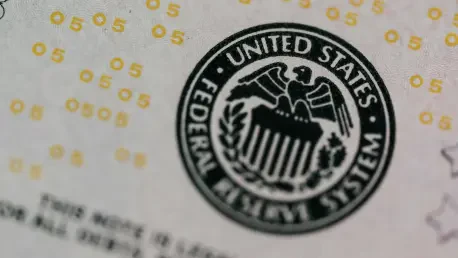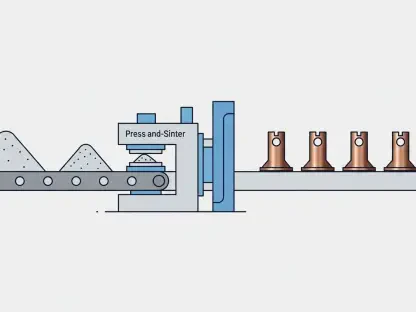In a climate of economic uncertainty, the Federal Reserve’s recent decision to slash its key interest rate to 3.9% has sparked intense debate across financial circles, marking the second cut this year. This move comes at a time when sluggish hiring, persistent inflation, and a government shutdown cloud the economic horizon, raising the stakes for consumers, businesses, and policymakers to unprecedented levels. With monthly job gains averaging a mere 29,000 and critical data releases stalled, the implications are significant. This roundup gathers insights from a range of economic analysts, market watchers, and industry voices to dissect the motivations behind the Fed’s bold action, compare differing perspectives on its implications, and explore what this means for the broader economy.
Decoding the Federal Reserve’s Latest Rate Cut
Economic Stimulus versus Inflation Risks
A prominent theme among analysts is the Fed’s intent to spur economic activity by lowering borrowing costs, particularly as hiring slows. Many financial experts argue that with unemployment ticking up to 4.3%, the central bank’s focus on supporting job growth aligns with its dual mandate. They point to the potential relief for consumers and businesses through cheaper mortgages, auto loans, and credit facilities as a much-needed boost to spending and investment.
However, not all voices agree on the wisdom of this approach. A segment of economists cautions that inflation, still hovering above the 2% target, poses a significant risk. They highlight concerns that stimulating the economy now could reignite price pressures, especially in sectors like services where costs remain elevated. This split in opinion underscores the tightrope the Fed must walk, balancing employment gains against the threat of runaway inflation.
Some market strategists offer a middle ground, suggesting that while the rate cut addresses immediate labor market weaknesses, the Fed must remain vigilant. They emphasize the importance of closely monitoring economic indicators—however limited they may be due to current data disruptions—to avoid overstimulating an economy already showing signs of recovery in certain areas. This nuanced take reflects the complexity of the Fed’s decision-making process.
Data Disruptions from Government Shutdown
The ongoing government shutdown, which began earlier this year, has left the Fed and analysts alike grappling with a lack of crucial economic data. Many industry observers note that the absence of monthly jobs and inflation reports has forced policymakers to rely on alternative metrics, such as corporate layoff announcements from major firms. This patchwork approach, they argue, introduces a higher risk of policy missteps.
A contrasting perspective comes from some financial consultants who believe the Fed’s adaptability in using non-traditional data sources demonstrates resilience. They point to the central bank’s efforts to track real-time indicators as evidence of proactive management, even if imperfect. Yet, they acknowledge that the uncertainty around whether delayed government reports will ever be released adds a layer of unpredictability to future decisions.
Another group of analysts warns of the broader implications of this data vacuum. They stress that without comprehensive insights into consumer spending and hiring trends, both the Fed and market participants face heightened volatility. This concern amplifies the need for transparency and alternative data strategies to bridge the gap until normal reporting resumes, highlighting a critical challenge in the current economic landscape.
Political Pressures and Market Reactions
Navigating Political Influence on Fed Independence
Political interference has emerged as a hot-button issue among commentators discussing the rate cut. Several policy analysts express alarm over public criticism from high-ranking political figures pushing for more aggressive rate reductions. They argue that such external pressures threaten the Fed’s long-standing independence, potentially undermining public confidence in its ability to make unbiased decisions based on economic data.
On the other hand, a smaller faction of observers suggests that political discourse is an inevitable part of the modern economic environment. They contend that while the Fed must strive to maintain autonomy, engaging with political critiques could foster dialogue on monetary policy’s real-world impacts. This viewpoint, though less prevalent, raises questions about how much external influence should be acknowledged in policy deliberations.
Market watchers also note the tangible effects of this tension on investor sentiment. Following the Fed’s cautious outlook on further cuts, major indices like the S&P 500 showed minimal movement, reflecting a lack of confidence in the central bank’s next steps. This reaction, coupled with political uncertainty, suggests that the Fed’s credibility could be at stake if these pressures persist unchecked.
Market Responses and Analyst Interpretations
The financial markets’ tepid response to the rate cut has drawn varied interpretations from industry experts. A significant number of stock market analysts attribute the flat performance of key indices to the Fed’s noncommittal stance on future reductions. They argue that investors crave clarity, and the current ambiguity—stemming from data gaps and internal disagreements—fuels hesitation in equity markets.
Conversely, some bond market specialists view the rate cut as a subtle win for fixed-income investors. They highlight that even a small reduction in the benchmark rate can lower yields on longer-term securities, offering slight relief to borrowers. This perspective contrasts with equity-focused views, illustrating how different market segments interpret the Fed’s actions through distinct lenses.
A third angle comes from economic forecasters who suggest that market reactions are less about the rate cut itself and more about broader uncertainties. They point to the interplay of inflation fears, labor market concerns, and political noise as creating a wait-and-see attitude among investors. This holistic assessment emphasizes that the Fed’s policy moves cannot be viewed in isolation but as part of a larger, interconnected economic puzzle.
Practical Takeaways for Consumers and Businesses
Turning to actionable insights, numerous financial advisors stress the immediate benefits of lower borrowing costs following the rate cut. They recommend that consumers explore refinancing options for mortgages or consolidating high-interest debt, as rates on loans and credit cards may ease over time. For businesses, the advice centers on leveraging cheaper financing to expand operations or invest in growth opportunities.
Another set of tips from economic consultants focuses on preparedness for volatility. With uncertainties around inflation and data availability persisting, they urge both individuals and companies to maintain flexible financial plans. This includes building cash reserves to weather potential economic downturns and staying informed about layoff trends or sector-specific challenges that could signal broader shifts.
A final piece of guidance from industry voices encourages active engagement with Fed communications. They suggest monitoring central bank announcements and interpreting alternative data releases to anticipate policy shifts. Empowering consumers and businesses to stay ahead of economic developments, this advice underscores the importance of adaptability in navigating an unpredictable financial terrain.
Reflecting on the Fed’s Path Forward
Looking back, the discourse surrounding the Federal Reserve’s rate cut to 3.9% revealed a tapestry of concerns and cautious optimism among experts. The clash of opinions on inflation risks, data disruptions, political pressures, and market reactions painted a picture of an institution under immense scrutiny. While some saw the move as a necessary boost to hiring and growth, others warned of potential missteps in an environment of limited visibility and external influence.
Moving forward, stakeholders should consider tracking alternative economic indicators independently to supplement the Fed’s constrained data landscape. Businesses and consumers alike might benefit from consulting with financial advisors to tailor strategies that account for both the opportunities of lower rates and the risks of volatility. As the economic climate evolves, staying attuned to central bank signals and market shifts will be paramount in preparing for whatever challenges or prospects lie on the horizon.









